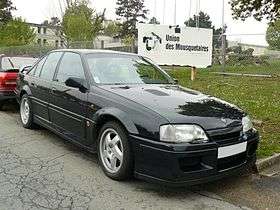Durable good
In economics, a durable good or a hard good is a good that does not quickly wear out, or more specifically, one that yields utility over time rather than being completely consumed in one use. Items like bricks could be considered perfectly durable goods because they should theoretically never wear out. Highly durable goods such as refrigerators or cars usually continue to be useful for three or more years of use,[1] so durable goods are typically characterized by long periods between successive purchases.
Examples of consumer durable goods include automobiles, books, household goods (home appliances, consumer electronics, furniture, tools, etc.), sports equipment, jewelry, medical equipment, firearms, and toys.
Nondurable goods or soft goods (consumables) are the opposite of durable goods. They may be defined either as goods that are immediately consumed in one use or ones that have a lifespan of less than three years.
Examples of nondurable goods include fast-moving consumer goods such as cosmetics and cleaning products, food, condiments, fuel, beer, cigarettes and tobacco, medication, office supplies, packaging and containers, paper and paper products, personal products, rubber, plastics, textiles, clothing, and footwear.
While durable goods can usually be rented as well as bought, nondurable goods generally are not rented. While buying durable goods comes under the category of investment demand of goods, buying non-durables comes under the category of consumption demand of goods.
Durability
According to Cooper (1994, p5)[2] "durability is the ability of a product to perform its required function over a lengthy period under normal conditions of use without excessive expenditure on maintenance or repair". Several units may be used to measure the durability of a product according to its field of application such as years of existence, hours of use and operational cycles.[3]
Product life spans and sustainable consumption
The life span of household goods is significant for sustainable consumption.[4] The longer product life spans could contribute to eco-efficiency and sufficiency, thus, slowing consumption in order to progress towards a sustainable consumption.[5] Cooper (2005) [5] proposed a model to demonstrate the crucial role of product life spans to sustainable production and consumption.
Durability as a characteristic relating to the quality of goods, that can be demanded by consumers, was not clear until an amendment of the law relating to the quality standards for supplied goods in 1994[5].
See also
References
- ↑ O'Sullivan, Arthur; Sheffrin, Steven M. (2003). Economics: Principles in Action. Upper Saddle River, New Jersey 07458: Pearson Prentice Hall. p. 302. ISBN 0-13-063085-3.
- ↑ Cooper, Tim (1994). Beyond Recycling: The longer life option (PDF). Whitechapel Road, London: The New Economics Foundation. p. 5. OCLC 48830517.
- ↑ Stahel, Walter (2010). "Durability, Function and Performance". In Cooper, Tim. Longer Lasting Products: alternatives to the throwaway society. Farnham: Gower. ISBN 978-0-566-08808-7.
- ↑ Cooper, Tim (1994). "The durability of consumer durables". Business Strategy and the Environment. 3 (1): 23–30. doi:10.1002/bse.3280030103 – via Willey.
- 1 2 Cooper, Tim (2005). "Slower Consumption Reflections on Product Life Spans and the "Throwaway Society"". Journal of Industrial Ecology. 9 (1–2): 51–67. doi:10.1162/1088198054084671 – via Willey.
